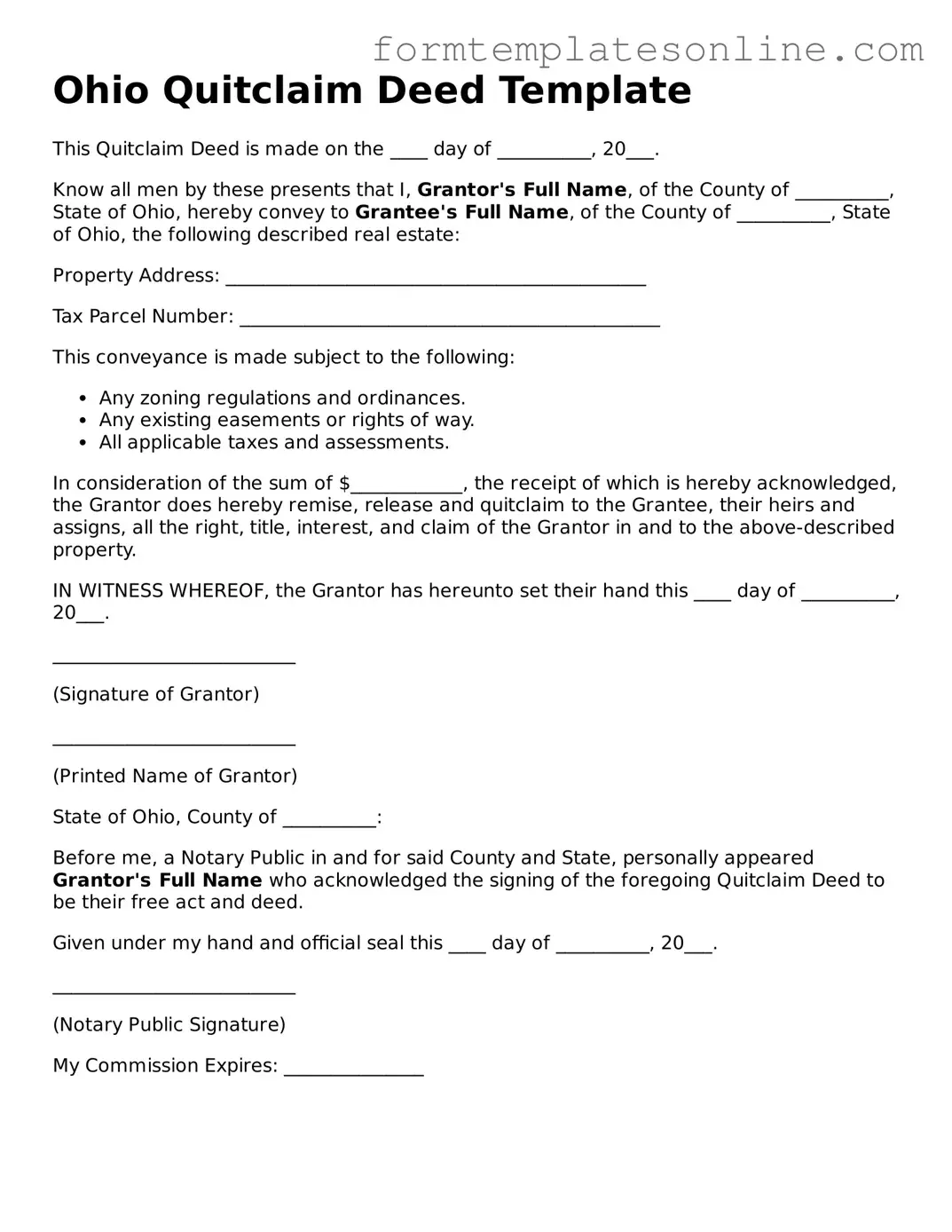Ohio Quitclaim Deed Template
This Quitclaim Deed is made on the ____ day of __________, 20___.
Know all men by these presents that I, Grantor's Full Name, of the County of __________, State of Ohio, hereby convey to Grantee's Full Name, of the County of __________, State of Ohio, the following described real estate:
Property Address: _____________________________________________
Tax Parcel Number: _____________________________________________
This conveyance is made subject to the following:
- Any zoning regulations and ordinances.
- Any existing easements or rights of way.
- All applicable taxes and assessments.
In consideration of the sum of $____________, the receipt of which is hereby acknowledged, the Grantor does hereby remise, release and quitclaim to the Grantee, their heirs and assigns, all the right, title, interest, and claim of the Grantor in and to the above-described property.
IN WITNESS WHEREOF, the Grantor has hereunto set their hand this ____ day of __________, 20___.
__________________________
(Signature of Grantor)
__________________________
(Printed Name of Grantor)
State of Ohio, County of __________:
Before me, a Notary Public in and for said County and State, personally appeared Grantor's Full Name who acknowledged the signing of the foregoing Quitclaim Deed to be their free act and deed.
Given under my hand and official seal this ____ day of __________, 20___.
__________________________
(Notary Public Signature)
My Commission Expires: _______________
